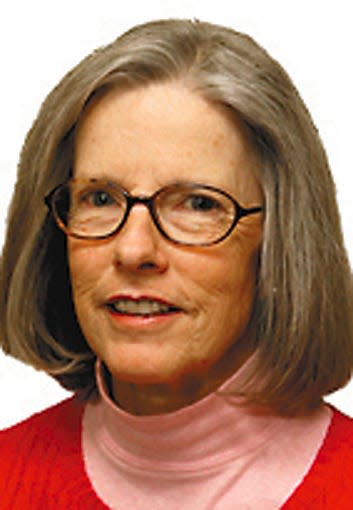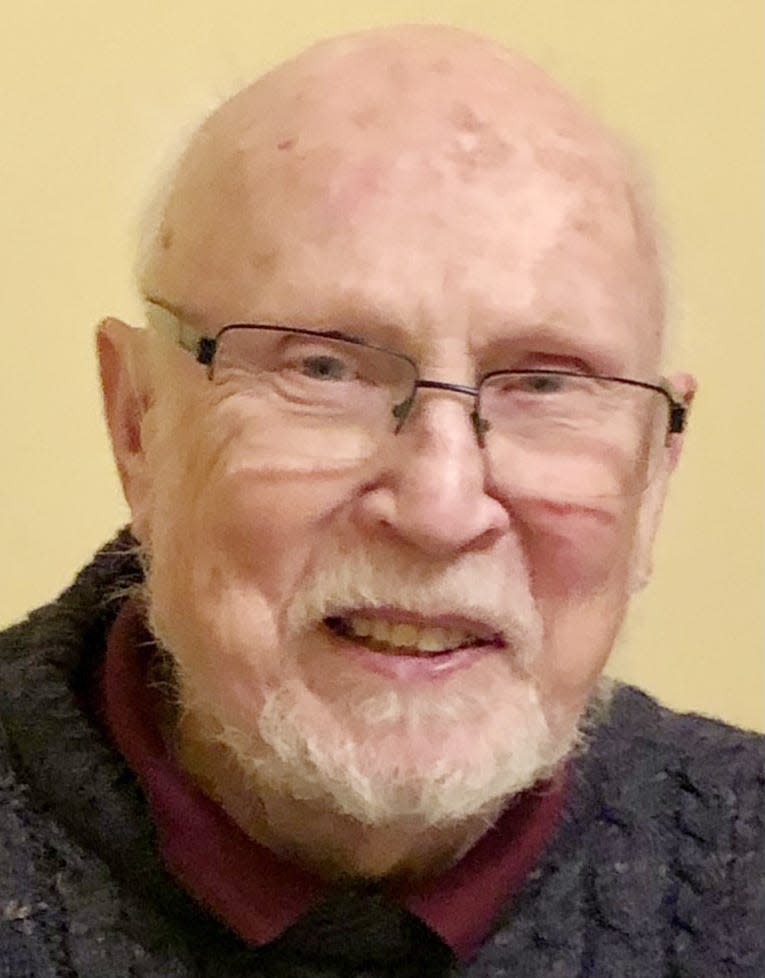Roundtable: If Galesburg had a Mount Rushmore, who should be on it?
If Galesburg had a Mount Rushmore type of monument, who is a person you think belongs on it that might not be obvious to others?

Harriet Seldon's money helped establish Galesburg, Knox College
I nominate Harriet Selden. Her father was a wealthy Troy, New York merchant, a Revolutionary War officer, a Yale graduate and a state legislator. George Washington Gale courted Harriet and after some hesitation (and family counsel against the marriage) she married Gale when she was 21 and he 31. She had nine children; six lived to adulthood.
Among the injustices of the 19th Century: any money or property a woman possessed entering a marriage or inherited while in the marriage, automatically became her husband's to control. It was Harriet Selden's money, plus a large loan from her uncle's bank in Detroit, arranged by Sylvanus Ferris, that provided the main funding of the establishment of Galesburg and Knox College. It was her money that built the handsome house on the north side of North Street between Cherry and Prairie, and after her death it was still her money that built G.W. Gale's second house around the corner on the west side of Prairie Street. Selden Street is a cross street north of Losey. — Laurie Muelder

Recommending Kroll, Larson, Moffitt, Bulkeley for Galesburg Rushmore
Looking for local talent, the problem is who do you leave out? I looked for people who contributed to the community by their services to the public. The list is not comprehensive and a lot of good people are left out.
Mount Rushmore has only four people represented; I’ve limited my list to four with only a brief comment on each.
Michael Kroll he was the inspiration and leading force behind building the new library in Galesburg.
Jack Larson beyond his radio program of old-time music he founded a number of charities and was involved in numerous other community activities.
Don Moffitt was a State Representative in the Illinois House of Representatives; in addition to helping fire departments across the state he has been active in the Knoxville Fire Department.
Harry Bulkeley was a judge and has been active on the Roundtable for years and community/history events such as his U.S Grant portrayal. — Charlie Gruner
More:Roundtable: What are the strengths and weaknesses of Galesburg?

Jacobs, Duncan, Moffitt, Hunigan made positive changes
The people that are most deserving of special recognition are the ones who do so because they want to make positive changes in the lives they touch. Several individuals come to mind who definitely have been a positive influence not only with individuals but the community as a whole. If there was a Galesburg Mt. Rushmore honoring these achievements they would be Jim Jacobs, Carlos Duncan, Don Moffitt, and my brother Wendel Hunigan. The saying "If you don't like or respect these leaders, then I probably wouldn't like you" applies.
Subjecting oneself to harsh public criticism isn't easy. Even when their own personal safety was in jeopardy there have been those who were willing to face that challenge. On the national level, it's difficult to single out one outstanding American, but Fannie Lou Hamer, Rosa Parks, or Barbara Jordan all deserve their place on our own Mt. Rushmore. All of these icons united people in times of great social unrest and embodied the ideals of what Galesburg aspires to be. — John Hunigan

Secretary of War Henry Knox argued for fair treatment of Native Americans
Since Knox County is in the “Military Tract,” where veterans of the War for Independence and the War of 1812 were assigned lands, a monument of this type might include the most prominent men whose names were chosen for the counties between the Illinois and Mississippi Rivers.
Henry Knox (1750-1806) was a bookseller when he enlisted, but his reading had given him such wide knowledge of military matters and the practical aspects of supplying an army, that Washington came to rely on him for advice, especially on his knowledge of artillery. Knox volunteered to bring cannon from recently captured forts in distant northern New York, then built sleds to carry them over snow and ice to Boston, where their sudden appearance on Dorchester Heights persuaded the British navy to flee hurriedly.
As Washington’s Secretary of War, Knox argued for the fair treatment of sovereign Indian tribes. Few know this history. — William Urban

Nehemiah West, first in Galesburg, among colorful characters
Faces on Galesburg’s Mt. Rushmore should include Albert Fox, The Magic Man. Albert walked around town doing magic tricks for people. He also has a pet monkey that rode on his shoulder.
Emmett Pate is another nominee. Emmett was an animal lover who was always taking care of several stray dogs. He also could walk up to a street sign, grab it and extend his body out 90 degrees. Standing on his head on a fire hydrant was another of his talents.
Alma Archer Fox was a Galesburg native who made it big as a celebrity. She interviewed Adolph Hitler, drank with Ernest Hemingway and went sailing with James Joyce.
Nehemiah West deserves a spot. The first man on the ground in Galesburg, West Street is named after him, yet it sounds like another directional street like North and South.
The next question is “where do we put this amazing monument?” — Harry Bulkeley
More:Roundtable: Is current inflation President Biden's fault

Mother Bickerdyke comforted, cared for injured and dying soldiers
I have to go with my first thought, Mother Bickerdyke. Mary Ann Bickerdyke’s statue at the courthouse deserves to be jumbo sized. It is a powerful icon and truly expresses what she did to ease the suffering of so many young men left shattered on the battlefields of the Civil War. The military strategies and technology behind the fighting had reached a horrible crossroad. Armies were marching across the fields in Napoleonic fashion and soldiers were literally being poured into meat grinders. When Bickerdyke took supplies from Galesburg to the hospitals in Cairo, Illinois, she was horrified at the terrible conditions. She did so much to mitigate the unsanitary conditions and offer comfort to the wounded.
She was at many Civil War battles including Shiloh, Vicksburg, Chattanooga and Atlanta. She had no qualm at showing her disdain for incompetent officers. General Ulysses S. Grant and General Sherman dared not get in her way. Her story is amazing and I encourage you all to read what she did for the fighting soldiers of the Civil War, both Union and Confederate and afterwards for veterans. At the statue dedication this is what was said of her: “She sang songs of home and heaven to dying men, while shot and shell fell in the midst of her field hospital.” Give her a respectful nod next time you pass by Linwood cemetery. — Stephen Podwojski
The Community Roundtable runs each Sunday and is made up of local writers. Community writers answer one question each week in 150 words or fewer.
This article originally appeared on Galesburg Register-Mail: If Galesburg had a Mount Rushmore: Mother Bickerdyke, Henry Knox on it

